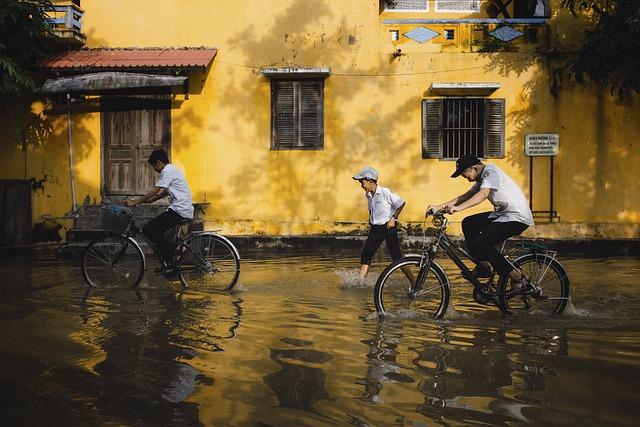The Impact of Floods on Pakistan’s Environment
Pakistan is no stranger to floods, with monsoon seasons often wreaking havoc across provinces. The impact of these floods extends far beyond immediate human concerns, significantly affecting the country’s environment. In this article, we will delve into how floods affect Pakistan’s ecosystems, economy, and what we can do to mitigate these risks.
Understanding Floods in Pakistan
Flooding in Pakistan is typically caused by heavy monsoon rains, glacier lake outburst floods, and river overflow. These natural disasters not only threaten lives but pose considerable risks to the country’s diverse ecosystems.
The Environmental Consequences of Floods
Floods can have devastating effects on the environment, often resulting in:
- Soil Erosion: Floodwaters can wash away topsoil, crucial for agriculture.
- Water Contamination: Floods can lead to the mixing of rainwater with pollutants, affecting freshwater sources.
- Biodiversity Loss: Natural habitats can be destroyed, threatening local flora and fauna.
- Deforestation: Reconstruction efforts might lead to increased logging, further degrading environments.
Impact on Ecosystems
The ecosystems within Pakistan are diverse, ranging from deserts to wetlands. Floods disrupt these ecosystems in various ways:
| Ecosystem Type | Flood Impact |
|---|---|
| Wetlands | Excess water can lead to temporary habitat loss for waterfowl; however, some species may benefit from increased surface water. |
| Forests | Flooding can uproot trees, leading to increased deforestation and habitat loss. |
| Agricultural Lands | Soil salinity may increase, rendering lands less productive for future crops. |
Economic Repercussions
The economic impact of flooding in Pakistan is profound. The agricultural sector, which employs a significant portion of the population, suffers greatly from disrupted farming practices. In addition to loss of crops, the fisheries and livestock are adversely affected:
- Agricultural Losses: Crop damage can lead to food insecurity and higher commodity prices.
- Infrastructure Damage: Roads and bridges can be destroyed, delaying aid and recovery efforts.
- Public Health Costs: Floods can lead to waterborne diseases, increasing healthcare costs.
Case Studies: Recent Flood Events
Several notable flood events in Pakistan help illustrate these impacts:
- 2010 Floods: A massive flood affected over 20 million people, with agricultural losses estimated at $5 billion.
- 2022 Floods: Record monsoon rains led to displacement of millions and severe infrastructure damage, highlighting the vulnerability of the population.
Mitigation Strategies
While floods are a natural phenomenon, their impact can be mitigated through various strategies:
- Afforestation: Planting trees can stabilize soil and reduce erosion.
- Creating Flood Plains: Preserving natural flood plains allows for water absorption and helps lessen the downstream impact.
- Community Preparedness Programs: Educating communities about flood response can save lives and reduce damage.
Practical Tips for Communities
Communities can take proactive measures to safeguard their environments:
- Engage in local conservation efforts.
- Regularly participate in community drills to prepare for flooding.
- Support local legislation aimed at flood management.
First-Hand Experiences
Many residents share similar narratives of devastation during floods. A farmer from Sindh recalls losing his entire crop in the 2022 floods, showcasing the emotional and economic toll on individuals. Sharing these experiences sheds light on the personal impacts of environmental disasters.
Conclusion
The impact of floods on Pakistan’s environment is multifaceted, affecting ecosystems, livelihoods, and the economy at large. As the frequency of these events increases due to climate change, understanding and mitigating their effects becomes essential for sustainable development in Pakistan. By investing in preventive measures and fostering community resilience, we can safeguard our environment and the livelihoods that depend on it.



